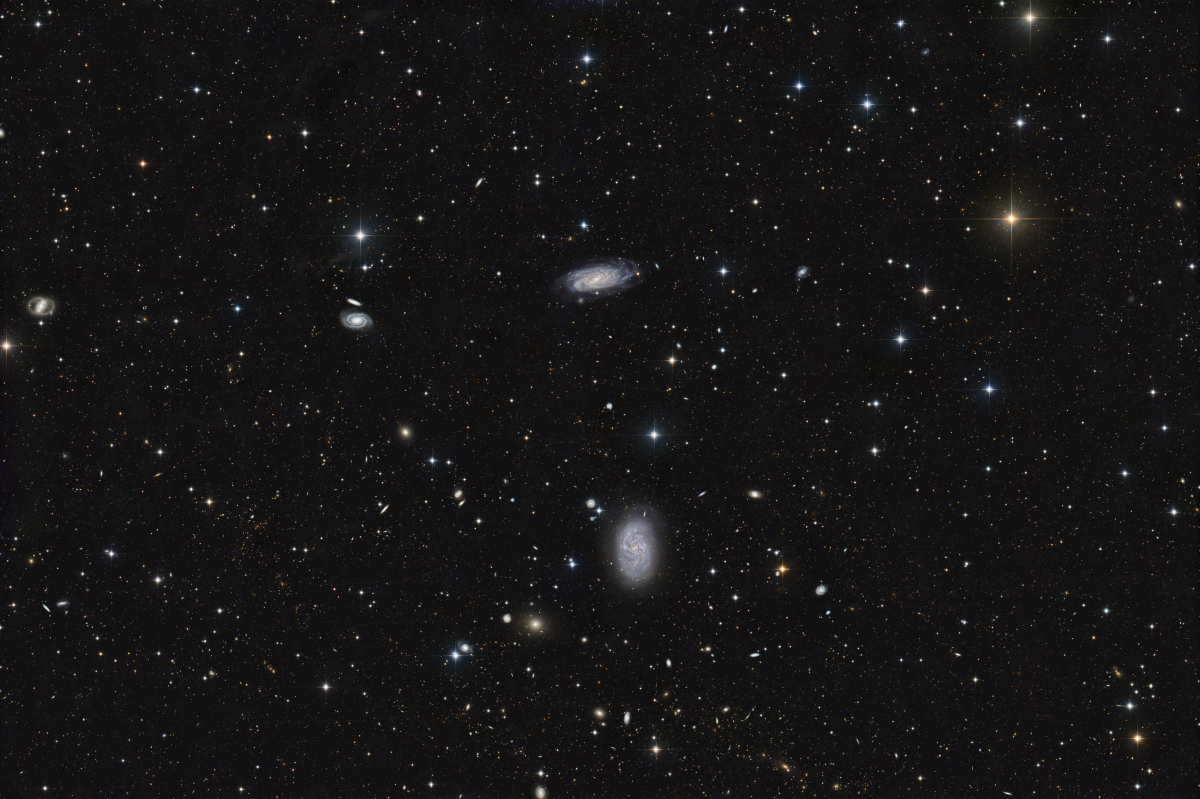
[back] NGC 1087/90/94 in Cetus [NED]
Higher resolved image / Höher aufgelöstes
Bild (6064 x 4040 Pixel)
Anotated
Version (6064 x 4040 Pixels)

|
300" |
|
(c) 2025 All astro photo images are copyrighted. They may not be used or reproduced without explicit written permission from the authors.
About this Image / Über dieses Bild
|
CCD: |
Omegon veTEC410c |
|
Image Type, Orientation: |
RGB Composite. North is at 12:00. |
|
Exposure time: |
122x300 sec. 1x1 bin (10:10h total) |
|
Exposure date: |
October 3rd...10th 2024 |
|
Location: |
Skinakas Observatory at Crete, Greece, remote-controlled from Bad Arolsen/Germany |
|
Filter: |
RGB: Internal Bayer-Matrix |
|
Instrument: |
Ganymed 60cm-Hypergraph in primary focus (f=1815.9 mm) |
|
Photographer: |
Josef Pöpsel, Frank Sackenheim, Stefan Binnewies |
|
Remarks: |
NGC 1087, NGC 1090 and NGC
1094 are located in the constellation Cetus and lie only a few arcminutes
apart. However, in space, the galaxies are clearly separated and do not form
a galaxy group. |
|
Bemerkungen: |
NGC 1087, NGC 1090 und NGC 1094 befinden sich im
Sternbild Cetus und liegen nur wenige Bogenminuten voneinander entfernt.
Tatsächlich aber sind die Galaxien im Raum deutlich voneinander getrennt und
bilden keine gemeinsame Galaxiengruppe. |
Back to the Galaxies' Overview / Zurück zur Galaxien-Übersichtsseite